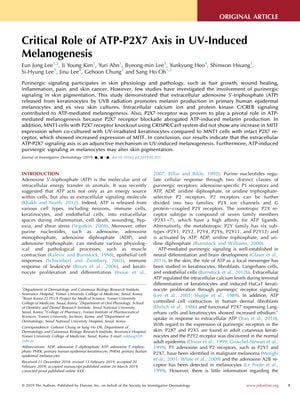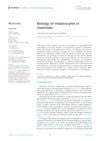Critical Role of ATP-P2X7 Axis in UV-Induced Melanogenesis

TLDR ATP increases melanin production in skin after UV exposure, with the P2X7 receptor being crucial for this process.
The document summarizes a study that explored the impact of extracellular ATP on skin pigmentation, specifically how ATP released from keratinocytes due to UVB radiation influences melanogenesis. The study found that ATP enhances melanin production in primary human epidermal melanocytes and skin cultures, with the P2X7 receptor playing a key role in this process. Blocking the P2X7 receptor inhibited ATP-induced melanin production, and P2X7-null cells did not increase MITF expression in response to UV-irradiated keratinocytes, unlike cells with an intact P2X7 receptor. The study, which included cells from three different donors aged 10-13 years and used various in vitro experiments, concludes that the ATP-P2X7 signaling axis is a significant mechanism in UV-induced melanogenesis, suggesting that ATP acts as a paracrine factor for UVB-induced pigmentation through the P2X7 receptor. The study was supported by grants from the National Research Foundation of Korea and the Korea Health Technology R&D Project, and data sets related to the article are available in an open-source online data repository.




